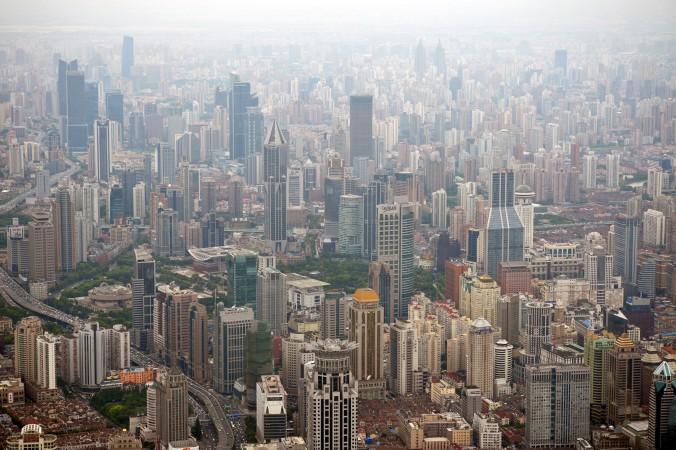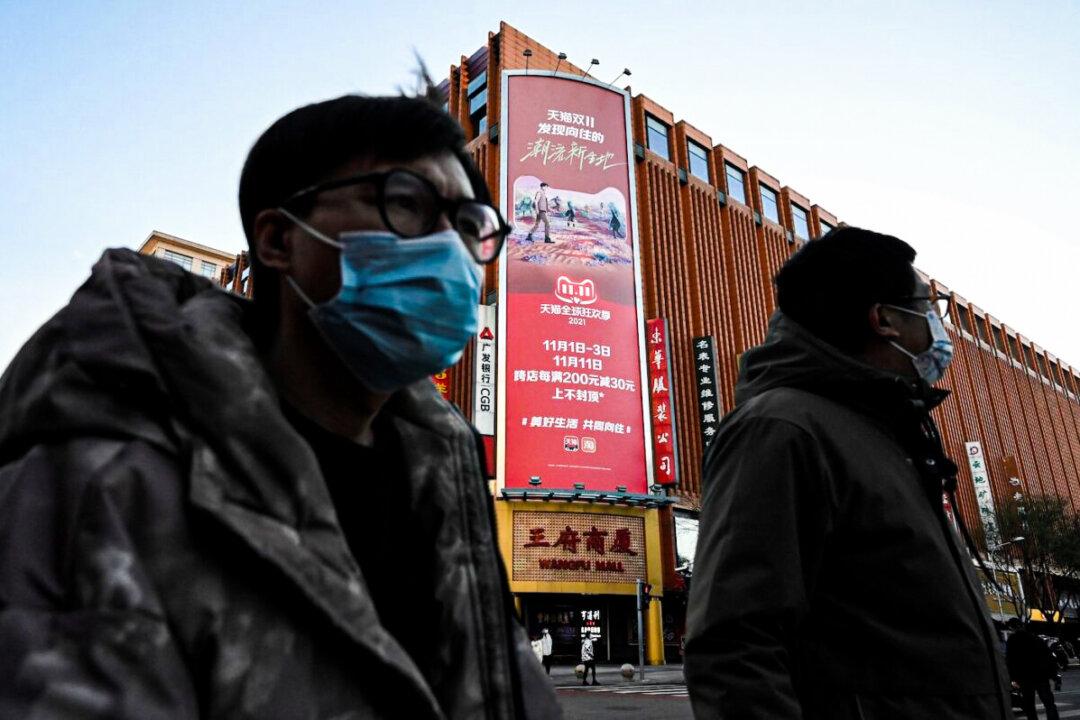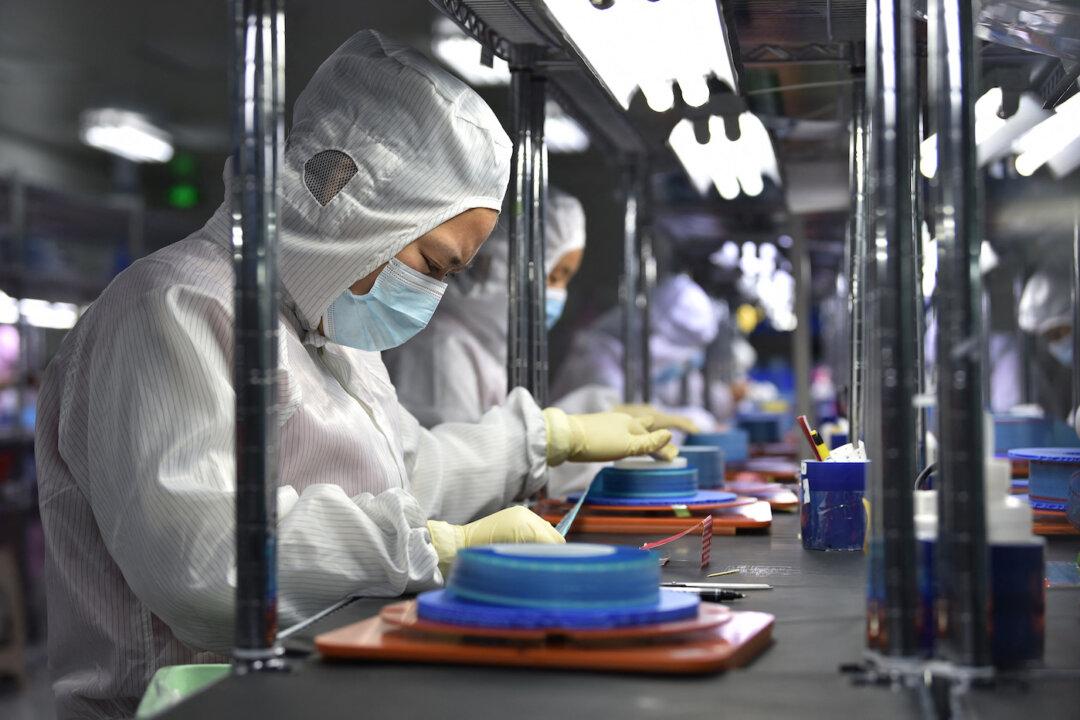Every year, the highlight of the “two sessions” is the “government work report.” This year, however, it was somewhat different. After the report was released, it was a bit unconvincing to break out into a mood of optimism and celebration.
With no other choices, Xinhua News Agency published an interview with the director of China’s National Development and Reform Commission Xu Shaoshi, titled: “Rebutting the New Round of Gloomy Economic Predictions, China’s Economy Now Undergoes Steady Development.”
The article served to announce to the world that the Chinese economy is now completely dependent on the world’s confidence in China. If confidence is high, China’s economy will turn out to be good. If the gloomy outlook prevails, China’s economy will steer toward recession.
In fact, whether China’s economy will be good or bad depends entirely on the fundamental factors of China’s economy itself. Currently, China’s economic outlook is not optimistic, be it the real economy or the fictitious economy, i.e. the financial systems. That is why, when the work report tries to cover every aspect of the economy, problems will pop up everywhere, just as in the old Chinese saying: it’s like “trying to press down fleas with one’s ten fingers.”
Many Projects, Unknown Funding
The work report states: “With the transformation of China’s economic growth mode, the proactive fiscal policy, steady and healthy monetary policy, and other favorable factors, China’s economy will continue its steady development.”
This premise is in itself contradictory. “Proactive fiscal policy” means governments need to spend more. However, “steady and healthy monetary policy” aims at controlling the money supply.
Over the past few years, each additional government investment project has relied on banks issuing loans. Now that money is not being printed and bonds not issued, where does the money come from? The work report does not give a clear direction, but mentions many projects that will require huge amounts of money.
Military and Stability Maintenance Spending
According to official reports, there will be a 12.2 percent increase in China’s military spending this year, amounting to a total of 808.2 billion yuan (about $131.6 billion U.S. dollars), an increase of 1.5 percent from last year.
The stability maintenance cost was not mentioned, but according to figures from several previous years, it will not be any lower than the military spending. Especially the strengthening of Internet control requires additional manpower and funding. With unrest in Xinjiang and Tibet having become an unavoidable reality, stability maintenance and military spending will only go up.
In 2013, the total government fiscal revenue was 12.9 trillion yuan. If we add up military spending and stability maintenance costs, these expenses would already exceed 1.6 trillion yuan, or 12.4 percent of total revenues.
Poverty Reduction
The work report stated that a poverty reduction goal, to include more than 10 million people, has been set for 2014. This is a project that will cost money.
According to Gao Hongbin, a National Political Consultative Conference Committee member and former vice minister of Agriculture, the poverty reduction target is not realistic. “With each yuan increase in China’s poverty standard, there will be an increase of 680,000 poor people,” Gao said.
Therefore, talk of poverty reduction is lacking common sense. If the annual target goal makes no sense, other statements, such as “poverty must not be inherited,” is, of course, likewise nothing but empty talk.
Pollution Control
This year, the Chinese leaders’ stated goal is to declare war on air, water and soil pollution, to set up environmental protection regulations and eliminate outmoded production industries.
The determination is very strong. The mayor of Beijing even made a solemn pledge: “If the air pollution problem isn’t fixed, I will have my head cut off!”
In Hebei Province, where industrial production is being connected to Beijing’s air quality, a rigid regulation has been set: “An increase of 1 ton of iron and steel production will cost your career on the spot.”
But the problem is that none of the three types of pollution is easy to eliminate.
In January I wrote an article titled “Land Pollution Control: The Difficulty of China Imitating Japan.” It explains how Japan used soil replacement to treat heavy metal contaminated land. This is relatively inexpensive and quick to accomplish. The cleanup time took 33 years per acre and cost approximately 180,000 yuan per acre on average.
But Chinese leaders have officially admitted that China has 50 million acres of heavy metal contaminated farmland with medium to serious extent. Experts involved in the investigation said there are 300 million acres. With such massive pollution, it remains a big question where the replacement soil will be obtained. The funding for the cleanup is an even bigger headache.
Consequently, if during the next decade China ever officially announces that, “the war on pollution has made great strides,” it’s either data fabrication or the cleanup process is merely going through the motions to deceive the public.
There are many projects that need money, and I will not list them all here. I will merely do an analysis of where the money might come from.
New Tax Revenue Sources
Governments are not the direct creators of material wealth. In a normal country, under normal condition, a government can increase fiscal revenue by raising taxes or issuing bonds, and there must be limits or ratios for the volume of bonds issued. Going over the limits will create big problems.
China has suffered from the problem of over-issuing local bonds in past years, and the work report has listed reduction of local government debt as a target. Therefore, increasing taxes becomes the only option to generate more fiscal revenue.
There are two methods to increase tax income. One is to raise the tax rate. The other is to create new tax sources by adjusting the industrial structure, improving the investment environment, attracting new investments, helping to facilitate more businesses.
The room for tax increases in China is almost zero. In the past three years, there have been plenty of complaints about tax levels. The regime’s tax department has already exhausted all means of collection.
Collecting tax in advance has become a common practice and has been criticized in many articles such as the one titled, “Collecting tax in advance: A way to ensure growth by killing the goose that lays the golden eggs.”
The regime also admits that China’s macro tax burden is too heavy. In February, China’s National Academy of Economy Strategy made public a report titled, “Realizing tax system reform comprehensively and deeply.” The report quotes 2013 data, which showed China’s fiscal revenue reaching 1.29 trillion yuan, with the average macro tax burden being nearly 10,000 yuan per person. It is not advisable to further increase taxes.
Domestic Consumption
Industrial restructuring is even more difficult. During the ruling period of former leaders Jiang Zemin and Hu Jintao, export was the main driving force of China’s economic growth. In addition, local governments at all levels invested heavily in infrastructure projects. The current leaders want to change to a domestic consumption driven economy. The work report also listed several reform targets, but did not state how to reach those targets.
Clearly, none of the three methods employed in the past to drive China’s economy is suitable for the new targets. For one, government investment will not be available for a while, as the work report indicates, “steady and healthy monetary policy” will be carried out.
Foreign trade has a lot of “bubbles,” because many fake companies were set up for the purpose of moving hot money in and out of China. In addition, the bursting of the real estate bubble is just a matter of time.
Restructuring the economy, improving the employment rate and national income are all just so much talk. Over 80 percent of China’s population is below the low or middle income level. Large unemployed populations are barely surviving. Low income families have no spare money for non-essentials. The middle income group has their money tied into mortgages.
To summarize, it is still a long way to convert the Chinese economy from an export driven mode to a domestic consumption driven mode.
Too Many Targets
There are too many targets to be achieved in the work report, and some of them even contradict each other. It is like trying to hold down fleas with your ten fingers: you catch one and lose another.
For example, the work report mentions “change of the economic growth mode” and “full-scale reduction of water, soil and air pollution.” This is easier said than done.
With the massive scale of pollution, it is even difficult to reduce the increase of pollution. The petrochemical industry is both China’s main tax payer and heavy polluter. To stop pollution, one needs to start with state enterprises Sinopec and CNPC. But that is almost impossible right now.
In central China’s Hunan Province, economic growth relies on lead, zinc, and other non-ferrous metals mining, which pollute all major water bodies in the province. The mining industry did not make the province rich, but instead damaged the province’s foundation for sustainable development.
During this year’s two sessions, Hunan’s provincial governor called for more central government fiscal support, because now the province has over 6.4 million people living below the poverty line, exceeding the total populations of certain provinces, such as Ningxia and Qinghai.
The work report emphasized carrying out a “proactive fiscal policy.” This slogan has existed for a long time, so this year a new definition has been given: “The fiscal expenditure will slide more towards civil, centralized, social construction.”
If it is civil related, then there will be only government investment, and the source of funding needs to be allocated first of all. In the past ten plus year period, the Chinese regime has pulled up the economy by printing more money, issuing more local bonds, and increasing government investment. It has become the largest money printing machine in the world. The above measures have also led to a highly inflated economy and local governments drowning in debt.
The work report claims to carry out “steady and healthy monetary policy,” which means no increase of money and bond issuing. This contradicts with the “proactive fiscal policy” in the report.
Besides, a lot of local governments are waiting for the “proactive fiscal policy” to stimulate economic growth. The Qinghai provincial governor, for example, complained to Premier Li Keqiang that, in the past years he was watching the CCTV evening news for signals of economic stimulation. And there are many others like him who are eagerly looking to the central regime for fiscal stimulus.
When talking about the Chinese economy, GDP growth is not a very meaningful indicator now, because the figure can be manipulated by all levels of governments.
“Confidence” can, to some extent, attract hot money, but cannot support a country’s long-term development, not to mention that the public’s confidence in a country’s economic situation is not decided by propaganda, but rather based on the real factors underlying the economy. In other words, people’s judgment is based on whether the real economy and the fictitious economy are healthy or not.
He Qinglian is a prominent Chinese writer and economist living in the U.S. She is the author of “China’s Pitfalls,” which concerns corruption in China’s economic reform of the 1990s, and “The Fog of Censorship: Media Control in China,” which addresses the manipulation and restriction of the press. She regularly writes on contemporary Chinese social and economic issues.
Read the original Chinese article.
Translated by Fenny Li and Tan Hohua. Written in English by Gisela Sommer.





